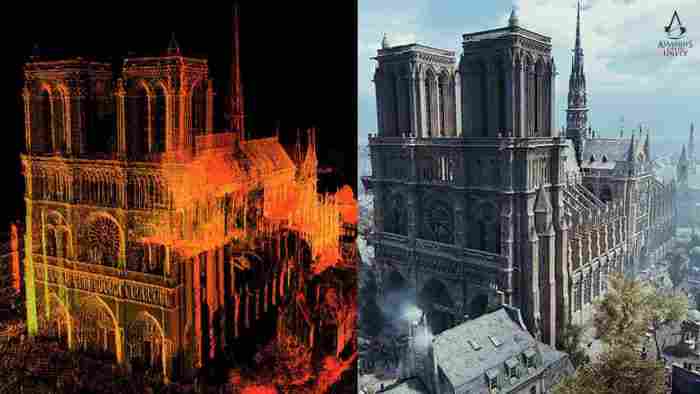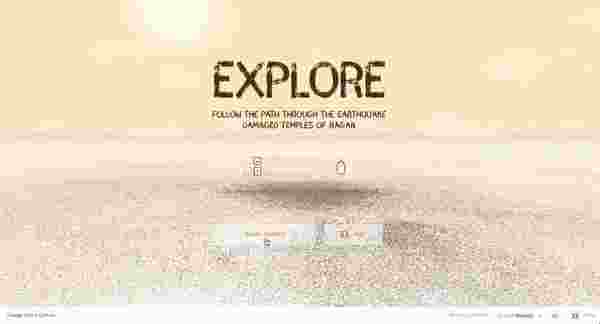Notre Dame fire: The apps that could help rebuild Paris’ historic cathedral
by Miles Warren
April 05,2022
As the dust begins to settle on the frenzied and emotional days that followed the tragic fire that struck the Notre Dame cathedral in Paris, a plan of action is beginning to emerge. With hundreds of millions of dollars already raised to aid Notre Dame’s resurgence, and an architectural competition launched to redesign the Cathedral’s lost spire , it is clear that Notre Dame will rise from the ashes of the fire that claimed it. Will it be the same though, or is a lot of the Cathedral’s historical significance lost forever?
Well, there are apps for this exact kind of thing. Over the last few years, a number of conservation projects have been established, designed to digitally capture sites of historical importance so that they can be kept for posterity’s sake. Let’s take a look at a few of these in greater detail and see just how they could help restore Notre Dame to its former glory.
Need to rebuild an iconic landmark that’s been struck by tragedy? Don’t worry; there could be an app for that

Last year, we first reported on the Open Heritage Project , which is a partnership between Google and the non-profit organization CyArk. The Open Heritage Project uses 3D laser scanners and drone-mounted DSLR cameras to capture areas of cultural and historical significance around the world that could be in danger due to political or geographical instability. Think about the destruction of Palmyra and Aleppo in Syria and you’ll have a good idea about the types of locations the Open Heritage Project is looking to digitally preserve.

The cool thing about the Open Heritage Project is that it has digitally recreated many of the landmarks it has scanned. These can be viewed from your desktop and in some cases even walked around and explored via virtual reality technology. To give this a go, you can visit the Open Heritage Project website or download the Google Arts and Culture app.

Unfortunately, and rather ironically, a Parisienne Cathedral wasn’t considered sufficiently at risk for the Open Heritage Project to scan. The good news, however, is that they’re not the only gunslinger in town. An organization called Mapping Gothic has also been using digital scanning technology to preserve the Gothic architectural wonders of France and they have complete digital scans of Notre Dame , which they took back in 2015.
According to Extreme Tech , the Mapping Gothic team, led by art historian Andrew Tallon, used a similar digital laser scanner and high-resolution photography method to the one described above to capture an impressive digital recreation of the iconic French Cathedral.
“The actual laser modeling is done by mounting a laser from a tripod and shooting the gallery, taking time to measure the distance between the scanner and every point it hits. Each one of these points represents a distance — by mapping millions of points from a single location, historians can measure how the building expands and contracts during the day, as well as how it shifts over longer periods of time. By combining the point cloud data generated by the laser scanner with on-site photographs taken at the same time, Tallon has created extremely accurate models of the underlying structure and design of the cathedral, and identified points where the cathedral’s masons either deviated from the original plan or paused work to allow the ground to settle.”
National Geographic did a great video on Tallon’s methods when he captured the National Cathedral in Washington:
There is no news yet about whether the Mapping Gothic scans will be used to help rebuild Notre Dame, but they are there should they be needed. Interestingly enough, however, those scans are not the only recreation of Notre Dame out there. In fact, another one allows you to walk through the historic cathedral just like you can with some of the Open Heritage Project scans. Furthermore, this other recreation even allows you to climb all over the magnificent building. We’re talking here about Assassin’s Creed: Unity.
The thing about Assassin’s Creed: Unity is that it did a great job of recreating Paris at the time of the Revolution. The game looks great and a lot of work was put into making the virtual Paris look exactly like the real one back in the day. All except for one detail. At the time the game is set, Notre Dame’s famous Spires still hadn’t been added to the Cathedral. When making Unity, however, Ubisoft decided that it was too integral to the essence of the Notre Dame everybody knows and loves today so they put them in the game anyway. This makes the Unity recreation of Notre Dame complete, in the modern sense.
To build Notre Dame in the game, one particular member of the Assassin’s Creed: Unity team, Caroline Miousse, spent two years modeling the real thing. In all, it took up about 80% of the work she did on the game. According to The Verge , Miousse spent years fussing over every tiny detail, including the texture and placement of every brick, and even which paintings were on which walls. The results are quite spectacular and should be seen to be believed.
France wants to rebuild Notre Dame in time for the Paris Olympics in 2024. This is a very short period of time to rebuild a Gothic masterpiece and will be a tough task. As we’ve seen though, there is plenty of information available to whomever gets the job and should they wish, they’ll have all the data they need to rebuild Notre Dame exactly as it once stood, in all its former glory. On top of that, we already have both digital and virtual recreations and we can still get up close and personal to the famous French Cathedral even as investigators still try to figure out what actually caused the fire.
Google is using VR to help conserve the world’s cultural heritage
